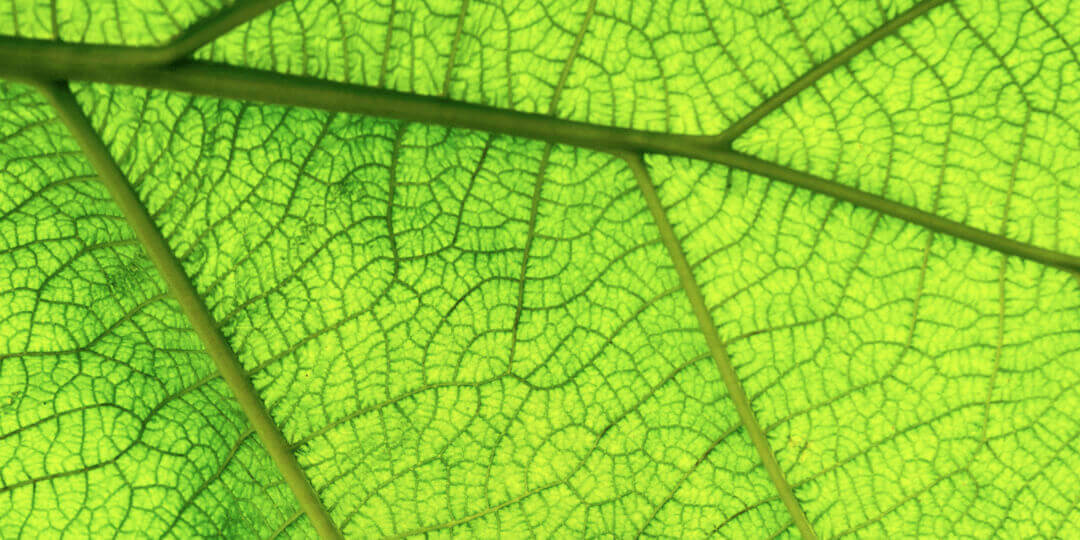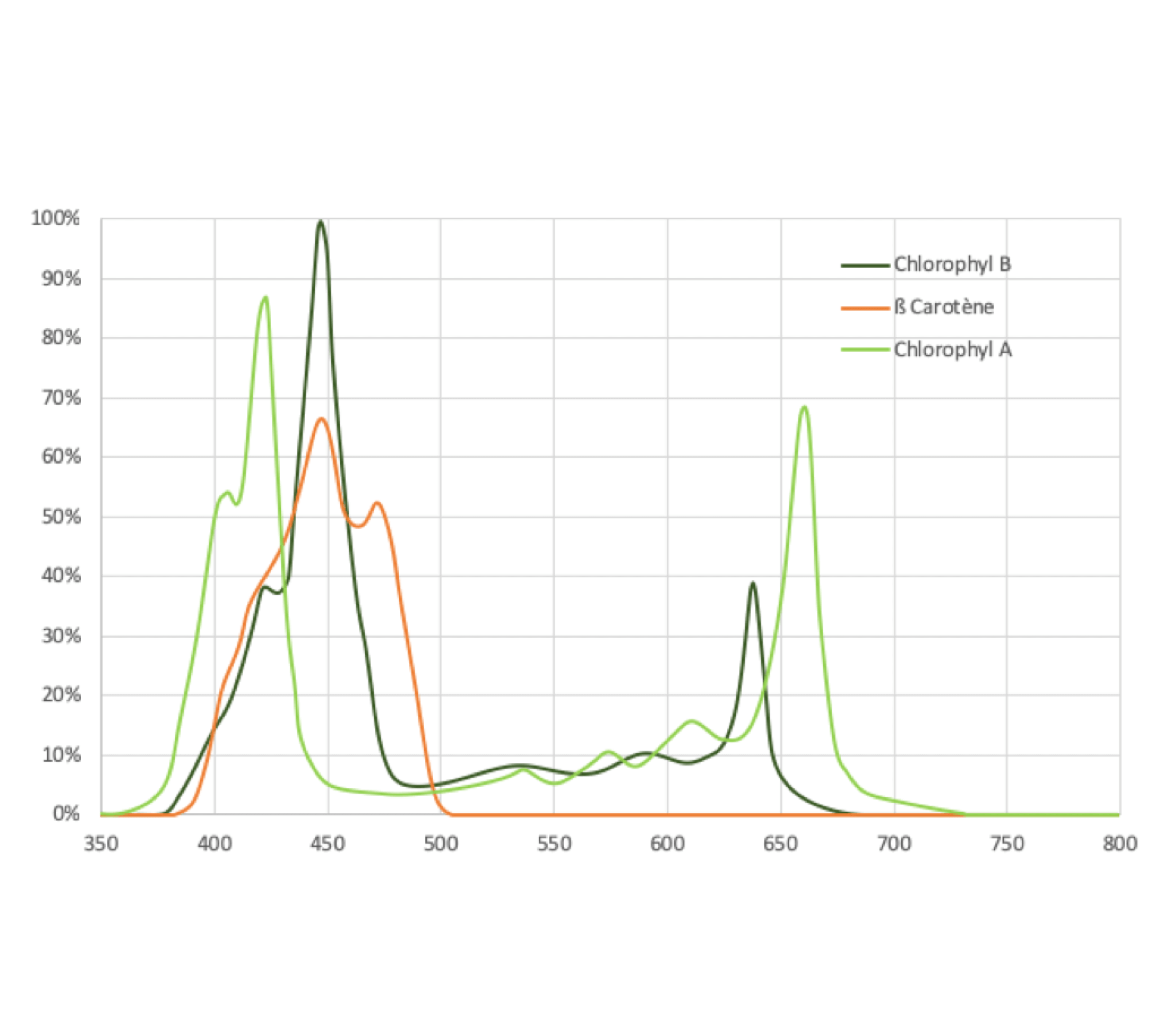
What is photosynthesis or photosynthetic light?
Photosynthesis is a unique mechanism to plants by which they synthesize organic matter using light energy, absorbing carbon dioxide from the air and releasing oxygen.
14 November 2023

Absorption spectrum of carotenoids and chlorophylls.
Plants harvest, store and use light energy through chlorophyll photoreceptors and carotenoids. These are located on the plants’ surfaces and mainly in the leaves. Both chlorophylls A & B transform photons into energy.
Carotenoids are the regulators of photosynthesis. They act as a buffer, storing uncaptured photons when the light intensity is high and, in turn, transmitting (stored) photons to the chlorophyll when the light intensity is lower. This way, carotenoids ensure a constant and maximum output of photosynthesis.
However, light serves another mechanism used by plants. Apart from its energy use, plants also use it for signage.


